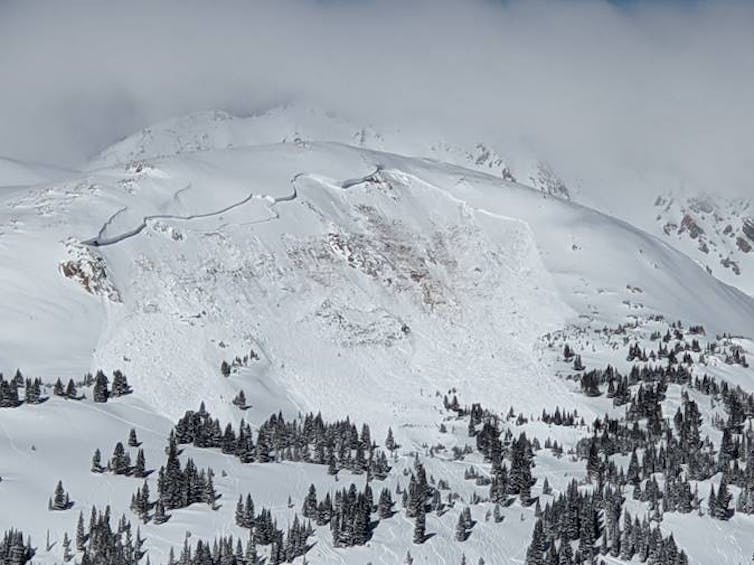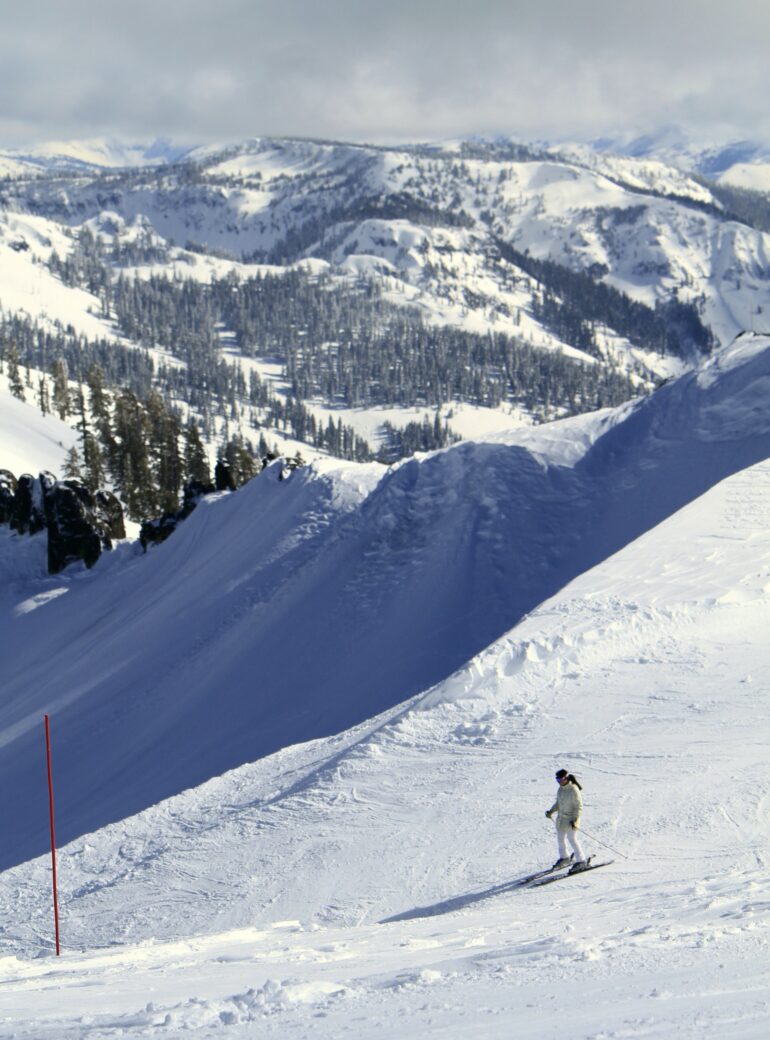An avalanche swept up skiers at Lake Tahoe’s largest ski resort on Jan. 10, 2024, as a 150-foot-wide sheet of snow slid down a mountain slope into a pile 10 feet deep. One person died in the avalanche and three others were rescued, according to the Placer County, California, Sheriff’s Office. The slide happened in steep terrain near the KT-22 chairlift, which had just opened for the season that morning. A second unplanned avalanche hit the same ski resort the next day, but no one was injured.
Avalanche deaths are rare inbounds at ski resorts like Palisades Tahoe, but the risk rises in the backcountry – 30 backcountry avalanche deaths were reported in the U.S. during the 2022-2023 season. Nathalie Vriend, a skier and physicist at the University of Colorado Boulder who studies avalanches, explains what happens in an avalanche and techniques for surviving one.
What causes avalanches?
The behavior of an avalanche depends on the structure of the snowpack, but that’s only one ingredient. An avalanche requires all the wrong conditions at the wrong time.
The angle of the mountain slope is important. Slopes between 25 and 40 degrees run the greatest risk of avalanches. Those are also ideal for skiing, of course. If the slope is less than 25 degrees, there might be little slips, but the snow won’t pick up speed. If it’s over 40 degrees, the snow typically cannot accumulate, clearing away the avalanche risk.
Avalanche awareness for backcountry skiers.
Then there needs to be a trigger. A snowpack may be seemingly stable until a snowmobile or skier disturbs it enough that the snow starts to move. Strong winds or rock falls may also cause an avalanche. Blowing snow can create wind loading and build up into cornices, creating an overhang that can eventually fall and trigger an avalanche below.
What happens inside the snowpack during an avalanche?
Mountain snowpack isn’t uniform. Because it builds up over time, it is a snapshot of recent weather conditions and has both stable and weak layers.
When snow falls, it’s a fluffy crystal structure. But when the temperature rises and the snow starts to melt and then refreezes, it turns more granular.
That granular, icier snow is a weak layer. When a new snowfall dumps on top of it, the grains in the weak layer can shear, creating a surface for an avalanche to slide on. The weight of new snowpack can cause the entire face of a mountain to fall away almost instantaneously. As the avalanche picks up speed, more snow and debris are incorporated in the avalanche and it can become really big and violent.

An avalanche takes down the side of a mountain near Winter Park, Colo., in 2021.
Colorado Avalanche Information Center via AP
In my lab at the University of Colorado at Boulder, I study small-scale laboratory avalanches. We use a technique called photoelasticity and create thin…
